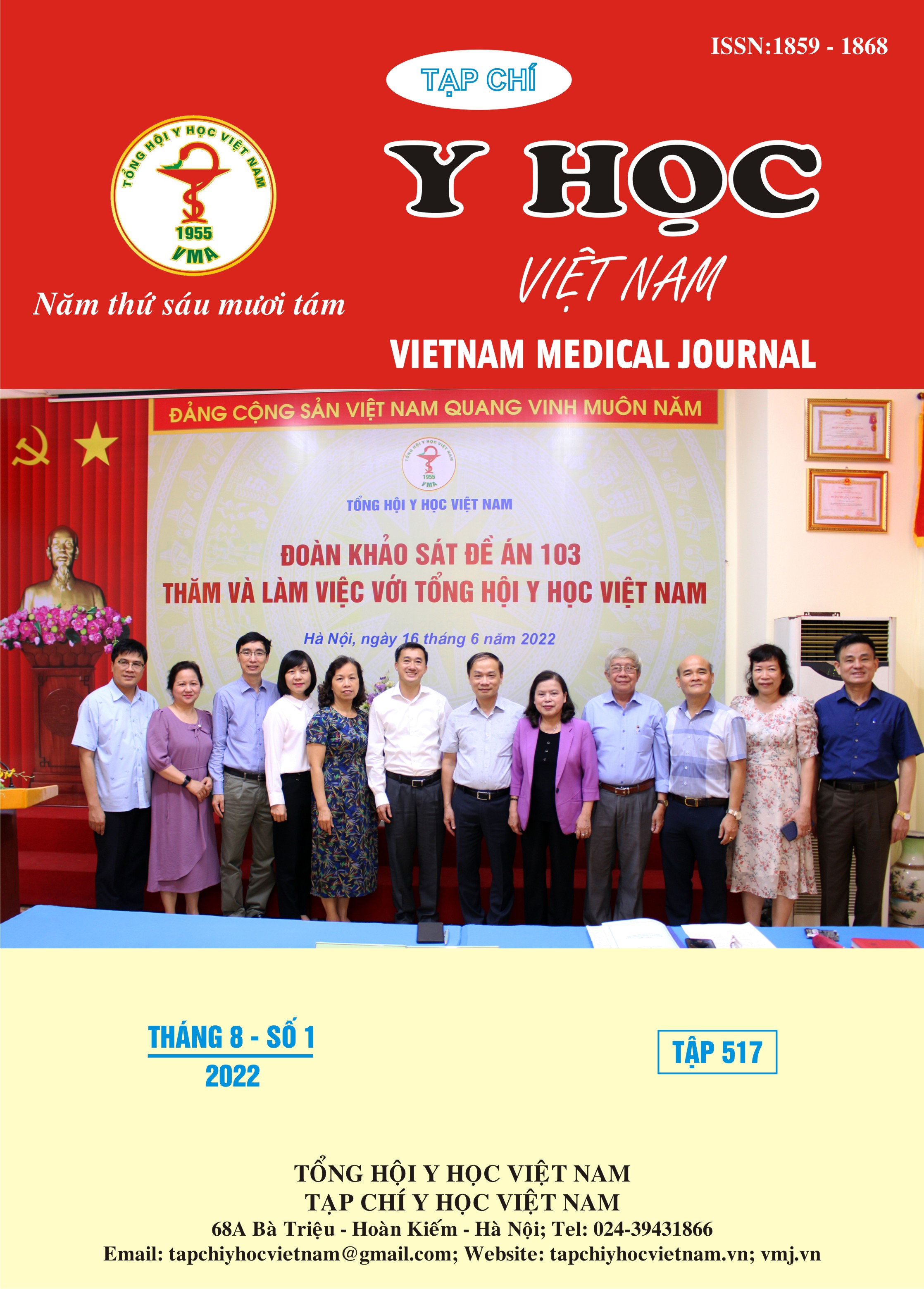AGITATION IN PATIENTS WITH BIPOLAR DISORDER CURRENT MANIC EPISODE: A CROSS STUDY AT NATIONAL INSTITUTE OF MENTAL HEALTH
Main Article Content
Abstract
Agitation is a frequent phenomenon in psychiatry, especially in bipolar disorder and should be fully accessed and appropriately managed. We did cross-sectional study on 57 inpatients who were diagnosed with bipolar disorder, current manic episode in National Institute of Mental Health from October 2019 to July 2020. Objectives: describe clinical characteristics of agitation and comment on treatment progress. Results: agitation rate were 68.4% of patients at the time of admission, the most common symptoms were short tempered and tense, respectively 68.4% and 64.9% of cases; symptoms of aggression, cursing and yelling were least common (26.3%). The mean ASS and OAS scores at admission were 17.21 ± 14.197 and 1.86 ± 2.67, respectively, with a statistically significant decrease after treatment. Conclusions: the rate of agitation in patients with bipolar disorder, current manic episode is rather high, mainly manifest in mild levels, we need early detection to have appropriate managements.
Article Details
Keywords
agitation, bipolar disorder
References
2. Merikangas K.R., Akiskal H.S., Angst J., et al (2007). Lifetime and 12-month prevalence of bipolar spectrum disorder in the National Comorbidity Survey replication. Arch Gen Psychiatry, 64(5), 543–552.
3. He H., Hu C., Ren Z., et al (2020). Trends in the incidence and DALYs of bipolar disorder at global, regional, and national levels: Results from the global burden of Disease Study 2017. Journal of Psychiatric Research, 125, 96–105.
4. American Psychiatric Association (2013), Diagnostic and Statistical Manual of Mental Disorders, Fifth Edition (DSM-5), American Psychiatric Publishing, Washington DC.
5. Blanthorn-Hazell S., Gracia A., Roberts J., et al (2018). A survey of caregiver burden in those providing informal care for patients with schizophrenia or bipolar disorder with agitation: results from a European study. Ann Gen Psychiatry, 17, 8–8.
6. Sachs GS (2006). A Review of Agitation in Mental Illness: Burden of Illness and Underlying Pathology. J Clin Psychiatry, 67(10), 5–12.
7. Maj, M., Pirozzi, R., Magliano, L., et al (2003). Agitated depression in bipolar I disorder: prevalence, phenomenology, and outcome. The American journal of psychiatry, 160(12), 2134–2140.
8. Spitzer R.L., Endicott J., Robins E. (1978). Research Diagnostic Criteria: Rationale and Reliability. Archives of General Psychiatry, 35(6), 773–782.
9. Serretti, A., & Olgiati, P. (2005). Profiles of “manic” symptoms in bipolar I, bipolar II and major depressive disorders. Journal of affective disorders, 84(2-3), 159–166.
10. Roberts J., Gracia Canales A., Blanthorn-Hazell S., et al (2018). Characterizing the experience of agitation in patients with bipolar disorder and schizophrenia. BMC Psychiatry, 18(1), 104–104.


